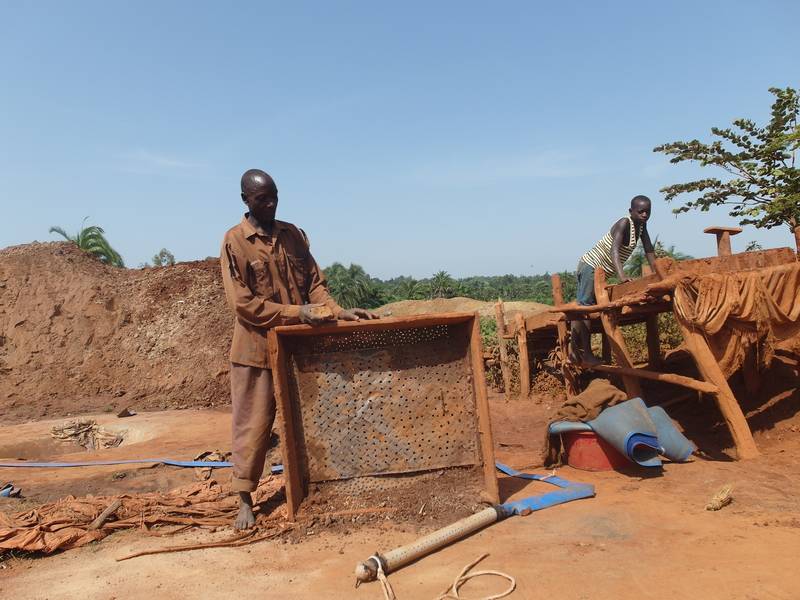Screen on the sluice
The screen was hand made and is not as efficient.
A crucial component in a gold mining operation using a sluice box is the inclusion of screens. Screens play an instrumental role in preparing raw material for optimal recovery, particularly when it comes to evening out particle sizes and enhancing dense gold retention.
When you introduce unsorted materials into your sluice system, they consist of various-sized particles - some coarse gravels or rocks that are too large for the riffles (the obstacles in a sluice box designed to trap heavy minerals), and smaller fines which can easily pass through without being trapped.
This is where screens come into play, acting as an initial sorting mechanism before the material enters your sluice system. By using different mesh sizes for these screens (typically ranging from ¼ inch to 30 meshes or finer), you can stratify particles based on size: larger pieces are separated and may be discarded, while smaller ones proceed into the sluice box.
The importance of even particle sizing becomes apparent when considering gold’s physical properties. Gold is dense and heavy relative to most other minerals found in placer deposits; it tends to settle at the bottom where water flow slows down due to resistance from larger particles or obstacles like riffles on a sluice box.
If your material contains an uneven mix of particle sizes, smaller gold fines may be carried away by faster-moving waters before they have time to settle and get trapped in the riffles. Conversely, larger particles might clog up these areas or prevent water flow altogether, hindering effective separation.
By using screens effectively prior to sluicing, you ensure a consistent particle size distribution entering your recovery system. This means that gold fines aren’t washed away prematurely and coarse materials don’t impede the trapping of dense particles in riffles or other collection mechanisms within the sluice box.
In essence, screens help maximize efficiency by ensuring all incoming material is appropriately sized for optimal interaction with your recovery system’s design features - leading to better gold capture and higher overall yields from your mining operation.
